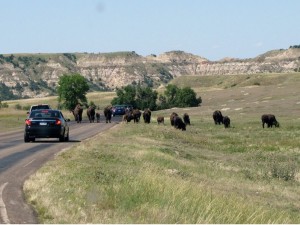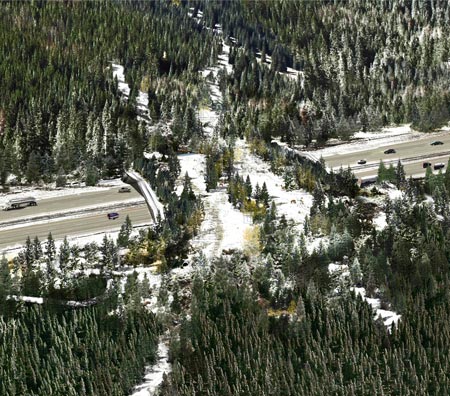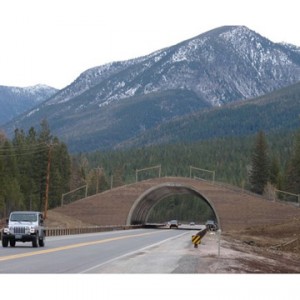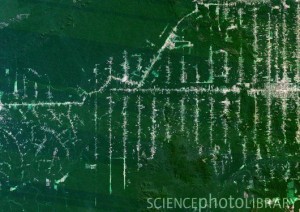This picture was taken in the middle of Theodore Roosevelt National Park, North Dakota. It shows a herd of buffalo attempting to cross a road that cuts through park grounds. At the same time, busy tourists and travelers are trying to get to their destinations.
Category Archives: Uncategorized
Over, Under, or Across: Wildlife Overpasses
As highways continue to fragment natural landscapes, wildlife overpasses, such as this proposed design in West Vail, Colorado, are an innovative way to maintain habitat connectivity and allow safe wildlife movement. These overpasses prove to significantly reduce collisions between cars and wildlife, such as in Banff National Park in Alberta, Canada where wildlife under- and overpasses have reduced wildlife factalities by 80 percent (FHWA, 2011). It is important to consider how to reduce the negative effects of habitat fragmentation when examining road development in order to protect both wildlife and drivers.
Federal Highway Administration (2011). Designing the next generation of wildlife crossing. Focus, Accelerating Infrastructure Innovations. Retrieved from http://www.fhwa.dot.gov/publications/focus/11mar/11mar02.cfm.
Asian Elephant on Tracks
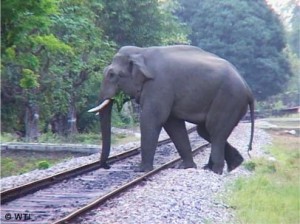 Taken in Assam, India, this photo captures an Asian elephant strolling across India’s rail system. Over the past ten years, about 50 Asian elephants were killed attempting to cross railroad tracks. Throughout the world, railways pass through the habitats of not just elephants, but many other important species.
Taken in Assam, India, this photo captures an Asian elephant strolling across India’s rail system. Over the past ten years, about 50 Asian elephants were killed attempting to cross railroad tracks. Throughout the world, railways pass through the habitats of not just elephants, but many other important species.
Photo retrieved from http://www.elephantfamily.org/what-we-do/where-we-work/projects/reduction-of-train-related-deaths-assam/
Wildlife Bridges Maintain Habitat Connectivity
Wolverine Wildlife Overpass
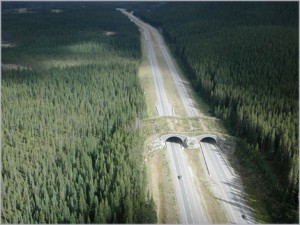 Wildlife overpass located in Banff National Park, Canada. The overpass connects forests across the Trans-Canada Highway, the main transport route to the west coast. Wildlife overpasses allow for animals to safely cross roads without the threat of being struck by vehicles.
Wildlife overpass located in Banff National Park, Canada. The overpass connects forests across the Trans-Canada Highway, the main transport route to the west coast. Wildlife overpasses allow for animals to safely cross roads without the threat of being struck by vehicles.
Transformation of NYC’s High Line
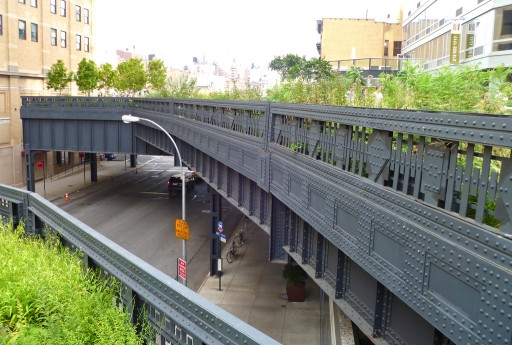
- image by reston2020
Throughout Manhattan, elevated railways built in the 1930s are being transformed into public parks. The line shown is above 10th Avenue in downtown New York City. This section of the park opened in 2009, and similar renovation projects are restoring railways as parks in Philadelphia, Bangkok and Paris.
Deforestion due to Roads in Brazil
This Landsat satellite image shows the deforestation that has taken place in the Eastern Part of Brazil. The picture illustrates the fishbone pattern that comes as a result of developing new roads. This fishbone pattern occurs when new roads that stem off of one main road are built. This effectively divides Brazil’s rainforest into smaller and smaller pieces.
Freeway Deconstruction
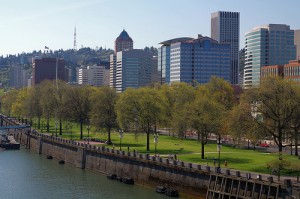 Formerly the site of Harbor Drive Freeway, the city of Portland was the first in the United States to decide to close and remove a freeway, and replaced it with the 37-acre Tom McCall Waterfront Part (seen here). Since the removal of the freeway in 1974, property values in downtown Portland have increased an average of 10.4% annually, crime has decreased in this area by 65% compared to 16% reduction in the city as a whole, and there has been no noted congestion in the surrounding roadways. Surprisingly, before and after comparisons demonstrated a 9.6% decrease in vehicle trips of nearby roads and bridges.
Formerly the site of Harbor Drive Freeway, the city of Portland was the first in the United States to decide to close and remove a freeway, and replaced it with the 37-acre Tom McCall Waterfront Part (seen here). Since the removal of the freeway in 1974, property values in downtown Portland have increased an average of 10.4% annually, crime has decreased in this area by 65% compared to 16% reduction in the city as a whole, and there has been no noted congestion in the surrounding roadways. Surprisingly, before and after comparisons demonstrated a 9.6% decrease in vehicle trips of nearby roads and bridges.Hello world!
Welcome to blog.richmond.edu. This is your first post. Edit or delete it, then start blogging!

